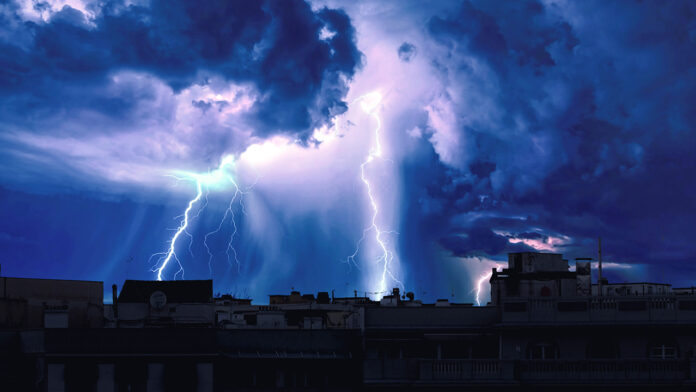In the realm of natural phenomena, few occurrences captivate our imagination and evoke awe like lightning. In this article, we unravel the electrifying facts that surround the flash of light and thunderous roar of nature’s own spectacle—lightning. Join us on a journey through the science, myths, and safety measures that make lightning a captivating force of nature.
The Science Behind Thunderstorms
Formation of Thunderstorms: Thunderstorms, the birthplaces of lightning, are complex atmospheric events fueled by warm, moist air rising and colliding with cooler air. This collision creates towering cumulonimbus clouds—the incubators of lightning.
Charging the Atmosphere: Within these towering clouds, static electricity builds up as ice particles and water droplets collide. This process creates an electric charge separation, setting the stage for the dramatic discharge we know as lightning.
Types of Lightning
- Cloud-to-Ground Lightning: The most familiar type, cloud-to-ground lightning, occurs when a discharge connects the negatively charged base of a cloud with the positively charged ground. It is the spectacular bolt that often steals the spotlight during thunderstorms.
- Intracloud Lightning: Intracloud lightning remains within the cloud itself, illuminating the sky with flashes that don’t reach the ground. This type contributes to the mesmerizing light displays seen during nighttime storms.
- Cloud-to-Cloud Lightning: When lightning jumps from one cloud to another, it’s known as cloud-to-cloud lightning. This dazzling display can occur horizontally within a cloud or between different cloud formations.
Atmospheric Electricity
The Role of Ice Crystals: Ice crystals play a crucial role in the electrification process. As these crystals move within the cloud, they accumulate charge, creating electric fields that eventually lead to lightning discharges.
Lightning and Thunder Relationship: The flash of lightning is accompanied by the thunderous sound of atmospheric disturbance. Thunder is the result of the rapid expansion of air surrounding the lightning bolt due to intense heating.
Lightning Safety Tips
Indoor Safety: When thunder roars, go indoors. Seeking shelter in a substantial building with plumbing and electrical wiring provides protection from lightning strikes. Avoid contact with electronic devices during storms.
Outdoor Safety: If caught outdoors, avoid open fields, high ground, and isolated trees. Instead, seek shelter in a sturdy building or a fully enclosed metal-topped vehicle. Wait at least 30 minutes after the last clap of thunder before resuming outdoor activities.
Ball Lightning
Mysterious Phenomenon: Ball lightning remains one of the most intriguing and mysterious lightning phenomena. Described as glowing, spherical objects that appear during thunderstorms, its existence and formation are not fully understood.
Theories and Speculations: Scientists propose various theories, including vaporized silicon, microwave radiation, and plasma balls, to explain the occurrence of ball lightning. Yet, the elusive nature of this phenomenon keeps it shrouded in mystery.
Lightning Myths and Folklore
Thunder Gods and Lightning Bolts: Throughout history, cultures worldwide have woven myths and folklore around lightning. From Thor, the Norse god of thunder, to Zeus, the king of the Greek gods, lightning has often been associated with powerful deities.
Lightning Rods and Benjamin Franklin: The famous experiment by Benjamin Franklin, flying a kite with a key attached during a thunderstorm, is etched in history. While the actual event’s details are debated, Franklin’s lightning rod invention remains a crucial safety measure.
Weather Phenomena Associated with Lightning
Superbolts: Superbolts are rare, exceptionally powerful lightning strikes that release energy equivalent to or surpassing that of a typical thunderstorm. These intense bolts can occur over large bodies of water and are detected from space.
Sprites and Elves: Above thunderstorms, elusive phenomena known as sprites and elves occur. Sprites are red or pink flashes above thunderclouds, while elves are concentric rings of light. These ethereal events add an extra layer of mystery to the atmosphere.
The Art and Impact of Lightning
Lightning in Art and Culture: Lightning’s dramatic displays have inspired artists and storytellers across cultures. From ancient cave paintings to modern digital art, lightning continues to be a symbol of power, inspiration, and natural beauty.
Impact on Technology: While lightning’s beauty captivates, its destructive power poses challenges. Lightning strikes can damage electrical systems, disrupt power grids, and pose risks to electronic devices. Mitigating these impacts requires advanced technologies and safety measures.
Conclusion: Nature’s Electrifying Symphony
In conclusion, lightning stands as a mesmerizing symphony of atmospheric forces, science, and folklore. From the towering clouds that birth thunderstorms to the dazzling bolts that illuminate the sky, each flash represents the intricate dance of atmospheric electricity. As we marvel at the wonders of lightning, it’s essential to respect its power and embrace safety measures. Whether captured in art, explored through scientific inquiry, or revered in cultural myths, lightning remains a captivating force that continues to spark our imagination and understanding of the dynamic world around us.

